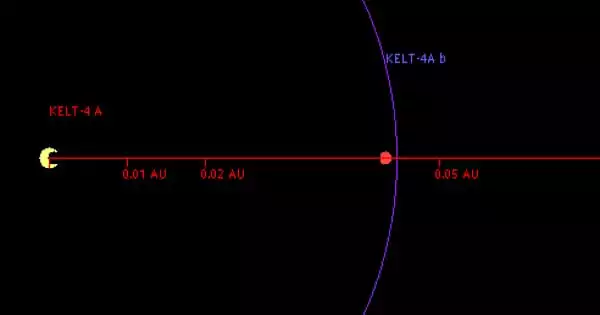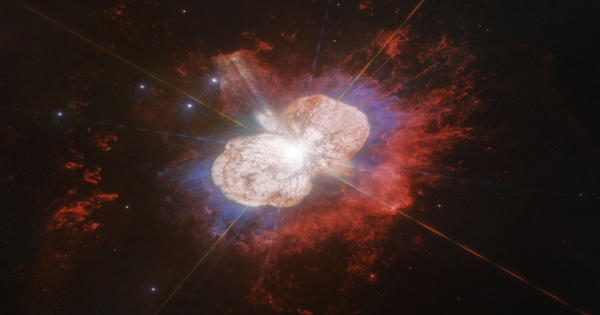KELT-4Ab is a gas giant exoplanet in the habitable zone of an F-type star. It’s an extrasolar planet that orbits the star KELT-4A in the KELT-4 star system. The planet is about 760 light-years (230 parsecs) distant in the constellation Leo. It has a mass of 0.902 Jupiters, takes 3 days to complete one orbit around its star, and is 0.04317 AU away from it. The Kilodegree Extremely Small Telescope discovered the planet (KELT). It was discovered in 2016 and was announced.
KELT-4Ab, which has a mass comparable to Jupiter, orbits the solitary star KELT-A every three days. Nearby, the stars KELT-B and KELT-C orbit each other once every 30 years, and they orbit KELT-A and its planet once every 4,000 years or so.
Planet
The exoplanet was identified by transit and is a Hot Jupiter planet orbiting KELT-4, one of three stars in a triple star system. It is the fourth planet discovered in this type of system. Researchers predict KELT-4A to be valuable in understanding more about inflated planets because it is the brightest host (V~10) of a Hot Jupiter in a hierarchical triple stellar system discovered so far.
While the makeup of the planet’s atmosphere is unknown, standing in the atmosphere above the planet, a single star would appear to be around 40 times the size of the sun in the sky on Earth. Each member of the binary star pair would be almost as bright as the full moon, though without a good telescope they would look like dots of light about a pinky-finger-width apart in the sky.

Star system
KELT-4 is a triple star system. KELT-4BC is a binary star system subcomponent of the triple, 328 ± 16 AU (4.91×1010 ± 2.4×109 km; 3.05×1010 ± 1.5×109 mi) away from KELT-4A and the projected separation between KELT-4B and KELT-4C is 10.30 ± 0.74 AU (1.541×109 ± 111,000,000 km; 957,000,000 ± 69,000,000 mi).
Planets orbiting triple stars are extremely rare; KELT-4Ab is only the fourth system known to have three stars. KELT-A is the brightest host star among these, not only because it is hotter than the other three systems’ stars, but also because it is so close to Earth – only 680 light-years away.
The scientists discovered the probable planet KELT-4Ab using a KELT survey and subsequently confirmed its presence using multiple other equipments. KELT, like the more well-known NASA Kepler spacecraft, detects exoplanets by the transit method, which involves studying how the amount of light from a star decreases as the planet passes between it and Earth.
In the following years, the European Space Agency’s Gaia spacecraft, which is now on a five-year mission, will observe the triple system. These observations will allow for a more precise assessment of the distance to KELT-4A, as well as more detailed measurements of its mass and radius, resulting in more precise measurements of the planet’s mass and radius.
















